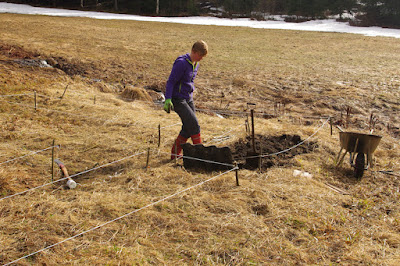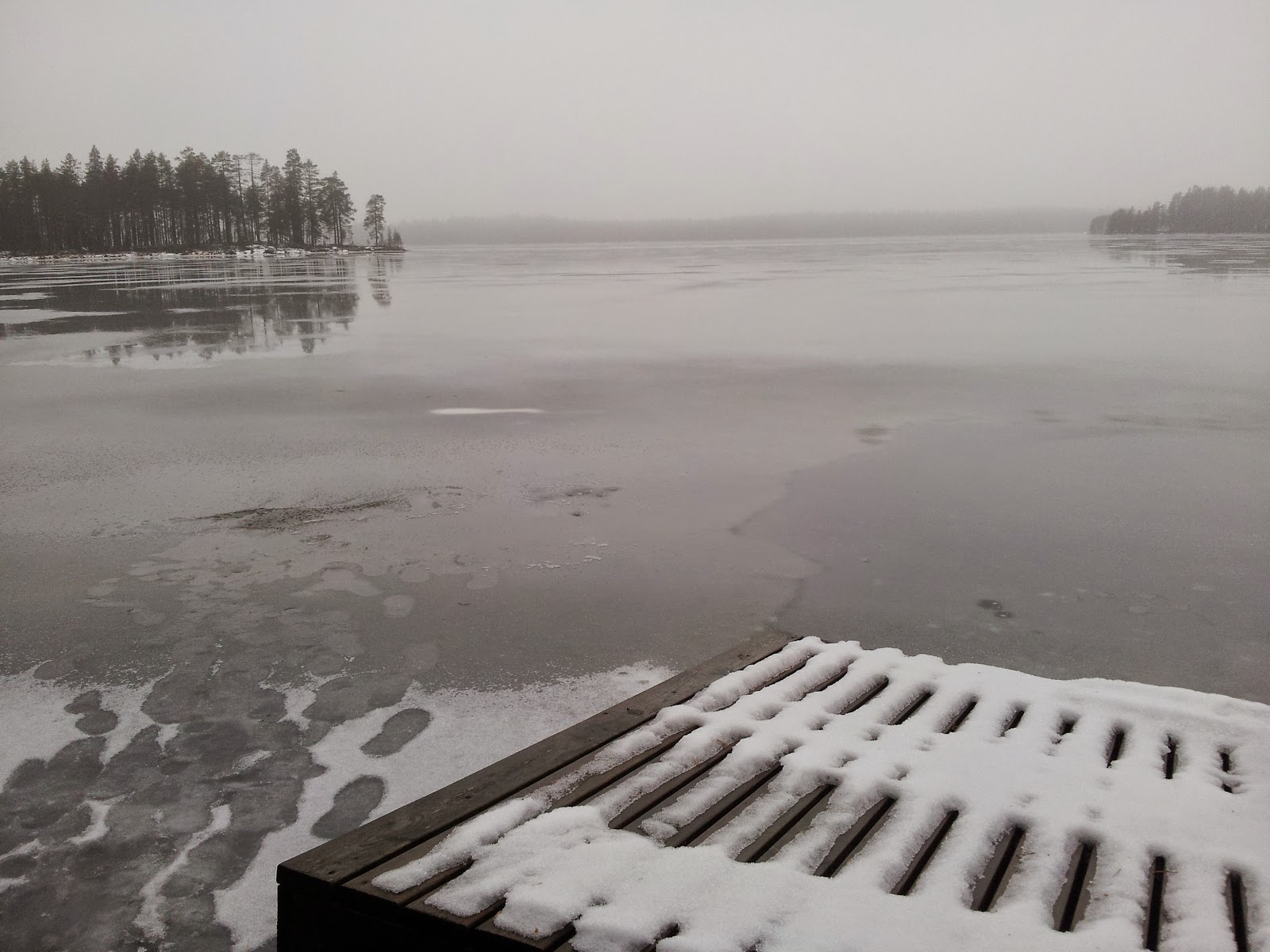I reached that time in my life when it was time for me to build a garden. again. Since I was 17, I have been moving around a lot. really a lot. Along the way, I have done my best to establish little garden plots here and there, which I have only ever managed to tend for a few months before moving again. But about a year ago, the opportunity rose to establish a creation I can really call my own. So I started dreaming and then digging. (p.s. you can click on the pictures to make them bigger)
Last spring I did a bunch of reading and checking out all sorts of crazy ideas on the internet...I mean I was actually writing my thesis...no. no I wasn't. I was using this garden planner.
 |
| Following the plan right from the beginning. |
The Plan
 |
| Raised beds with 2 kinds of kale and slightly failed bok-choi and arugula mix in the background. |
- drainage. the field where I wanted to build my green empire was saturated most of the year
- clayey soils. really easily compacted and not so good for growing roots so better soil would have to come from building the garden up on the clay
- warmer. this garden is at 63 degrees north. Further north than Anchorage and Yellowknife. needless to say, the growing season is short. raised beds warm up faster than the ground giving a slight growing season advantage.
 |
| Starting out on the floor of the little plastic greenhouse. It was difficult to limit the number of seedlings I started! |
Second decision: Hügelkultur. What? Why?
- burying large amounts of organic matter (usually wood) under the topsoil.
- absorbs water in spring on this almost swampy site and releases it in the summer making for less watering. at least that is the theory. Less watering appeals to me because I live 130km away from this garden and there are no outside taps to set up an automatic irrigation system.
- keeps the topsoil out of the water and helps it drain in the spring
- we had lots of old half-rotten firewood to get rid of, so under the garden seemed like a good place
 |
| Later on in the little plastic house. cilantro, tomatoes, peppers and lots of later seedlings |
- I don't like the social hoop-la that has grown over this term, so I won't use it. just like I won't use herbicides or other pesticides and I won't be using fertilizers. So am I growing organically? depends on what your definition is. by the purest standards I am not. I use regular seeds from the store, not organic ones. I use regular old manure, not stuff from an organic farm.
The Build
 |
| Digging down into the water table, then building it back up again. First layer: wood. Second layer: soil. Recycled roof "tiles" as garden bed walls. |
- First dig down a section and move the heavy clayey soil to the side.
- Fill bottom with old firewood
- Place walls
- Dig down next section and use that soil to bury the firewood in the first section.
- Repeat until entire bed is dug.
- add several wheelbarrows of composted horse mature and blend with the very clayey soil.
- add thick layer of straw
- add another layer of horse manure
- add sand. blend lightly with horse manure.
The Location
 |
| mid April |
Drawbacks.
 |
| exactly 4 months later...mid August |
Benefits.
Beautifully composted old manure piles stashed in the forest. This was like black gold and made my garden possible. Despite the fact that most of this horse manure was well over 7 years old, there was still enough power left in it to get some impressive broccoli, towering dill, giant carrots, monster parsnips and voluminous lettuce. Also, I found a stash of a few hundred old roofing tiles that made the best garden walls I could have hoped for. There was lots of improperly stored firewood that worked so well under my garden beds. So...quite a few plus points over all!
 |
| Again, mid-August |
The Result
 |
| Peas and the incoming army of weedy germinants |
It grew pretty well for the most part (especially weeds). Who knew that such cute broccolis could become such monsters? I was really pleased with most things, but did face some real disappointments with a few others, most notably the bush beans. After I planted the seeds (in pots in a greenhouse) there was more fermentation than germination. that was unfortunate. The beets didn't even make it to the size of a ping-pong ball and one variety of carrots was pretty sparse.


 |
| Thanks for the photo Kathleen! |
Next Year?
Overall, what did I learn? |
| little lettuces, snap peas and the broccoli monsters that grew in the middle of everything! |
 |
| Nikki, thanks for being such an awesome paparazzi. Now I actually have picutres of my garden at maturity :) |
 |
| Towering dill. The bees and hoverflies and all kinds of good pollen-loving beasties swarmed to my garden to get some! |
- Do not plant anything close to cabbages. They dominate space, overtake light and I'm sure gobble up all kinds of nutrients too. even the weeds can't grow under them, which is a good thing!
- plastic greenhouses need proper anchoring. seriously. they do more harm than good blowing in the wind
Other things to try next year:
- more flowers. especially edible ones.
- green manure.
- crop rotation!
- potatoes (the ones pictured came from Aku's personal field)
That's all for now! Maybe there will be another blog next year ;)
 |
| Squash monsters. They suffered from a drought after most of the fruit was set, so about half of what should have ripened actually dropped. :( |
 |
| Peas and weeds and calendulas |
 |
| Some of the very few vine-ripened tomatoes this year. It was a cold and wet summer. |
 |
| The more successful carrots and spring onions...in the spring :) |
 |
| The onion harvest. I wish that I had included something for scale because these were not normal-sized, they were TINY. |












